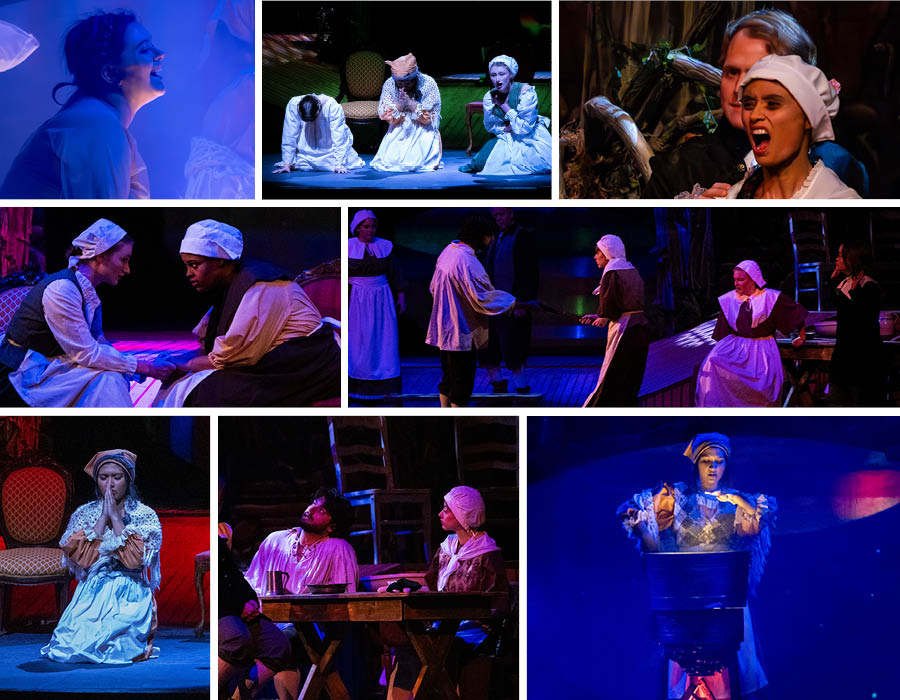
By Abigail Hrabar
This weekend, many took to the Ashmore Auditorium to view Pensacola State College’s “The Crucible”. The play, written by Arthur Miller, was first performed in 1953 as a dramatization of the Salem witch trials and an allegory for the anti-Communist hysteria of the 1950s. It is a classic play, the script of which is often read in high school, and one that is certainly still well-known and relevant today.
By 6:30 p.m. people were already sitting outside the doors awaiting the 7:30 p.m. show’s start. As the doors opened at 7 p.m., people filled the seats of the auditorium buzzing with excitement. Once the lights dimmed, it was time for the show to begin.
The play began in a dimly lit forest, girls dancing around a cauldron in the woods outside of the city of Salem. A woman stands chanting over the boiling liquid. As they all danced around and smoke filled the stage, they began laughing hysterically. Until suddenly, Reverend Parris finds the girls. All scatter, but the reverend’s daughter, Betty, who appears to be in a stupor.
This event is what begins the rumors of witchcraft. From here, we are introduced to Abigail Williams, another dancing girl from that night and the niece of Reverend Parris. When first questioned by her uncle, Abigail attempts to deny all possible rumors of witchcraft. But soon, she learns she can use it to her advantage.
As the play progresses, she uses her supposed spiritual suffering and victimhood as a power, causing witchcraft hysteria across the town. At the center of the plot, it is revealed that Abigail is the mistress of a married man, John Proctor. After accusing many others, Abigail uses her power over the city of Salem to convince the court that Goody Proctor, Proctor’s wife, is a witch who stabbed Abigail with a needle using a doll.
As hysteria grows, more and more are hanged for witchcraft, with Abigail Williams and some of the girls that danced that night causing widespread fear and spewing wild accusations. At the end, John Proctor gets hanged for disobedience against the court as his pregnant wife awaits her execution for supposed witchcraft in jail.
Throughout the entire show, audience members were having fun and laughing loudly as John Proctor made silly quips and side-eyes at various enemies of his. Although, the show certainly did not just offer comedy. With intense moments, loud screaming, and the dark theme of constant hangings and false witchcraft accusations, the play also balanced the much more sinister elements well.
If you are interested in attending a play at PSC’s Ashmore Auditorium, Navarre High School will be performing “Footloose” this upcoming April 4 and 5. Visit the ticket booth in-person at Building 8 on the Pensacola campus or online at the PSC Performing Arts website at performingarts.pensacolastate.edu for further information on upcoming events.
